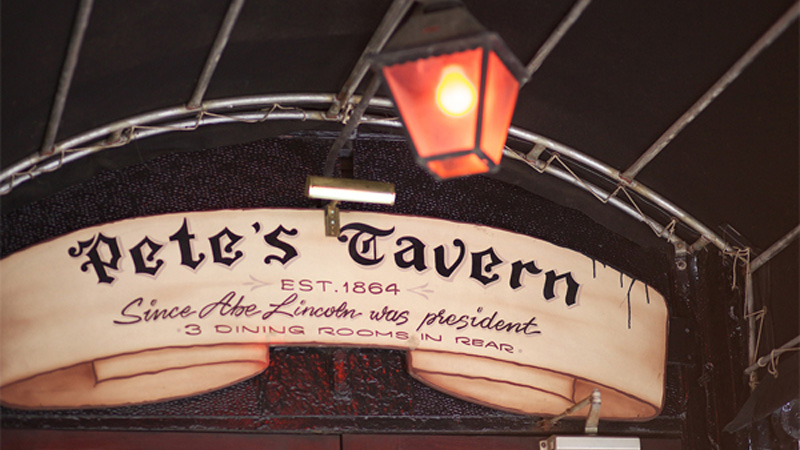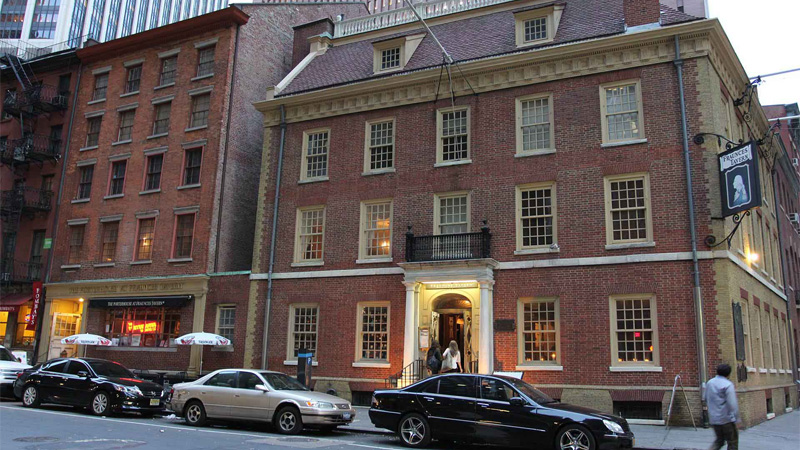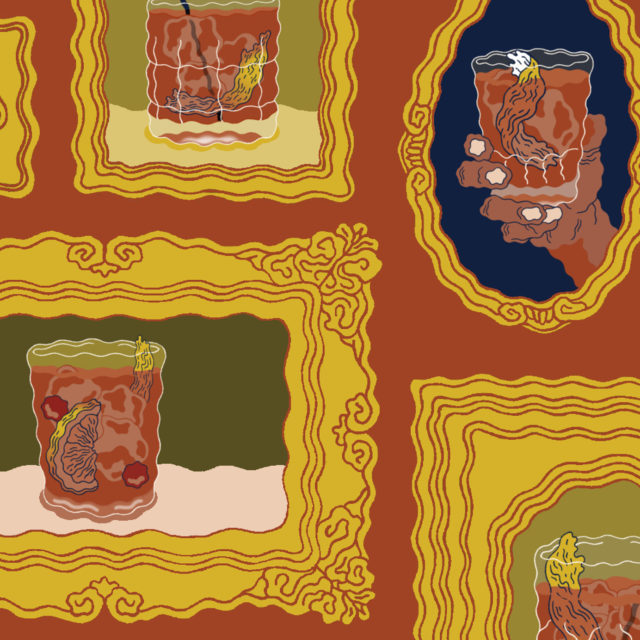On March 10, six days before the coronavirus pandemic brought New York City and most of America to a grinding halt, some colleagues and I set out to taste and rank the Old Fashioneds at several storied Manhattan saloons. The premise was simple: Could we find high-quality examples of one of America’s oldest cocktails among seven of the city’s oldest bars?
Like the Old Fashioned itself, the answer turned out to be short, sweet, and not overly complicated: Yes, it’s entirely possible. But the evening itself revealed much more about New York’s oldest bars than just their ability to mix drinks. Six months on, those lessons feel even more poignant, with the bar industry reeling from enforced closures and capacity caps, and the real possibility of many bars never reopening.
Grouping “old” bars together by virtue of their ages ignores what makes each one special. Yes, these establishments share centuries of combined history, but these are not just cookie-cutter museums where one can order an alcoholic refreshment. Each has a unique aura and identity, influenced by its storied past, but not defined by it.
We set out that night to examine Old Fashioneds at old bars. In the end, we captured something much more significant: One last glimpse of New York city’s most treasured drinking dens before life as we knew it changed forever.

Spirits Beyond the Glass
If any New York saloon’s walls could talk, P.J. Clarke’s wooden cladding and exposed bricks would have more than their fair share to tell. Legend has it that owner Patrick “Paddy” J. Clarke kept the bar alive during Prohibition by serving homemade bathtub gin and bootlegged Scotch. Frank Sinatra was a purported regular in the ‘40s, while Buddy Holly famously proposed to his wife here in the ‘50s. They had known each other for just five hours.
“It’s one of a handful of good old taverns that have survived in New York,” says Robert Simonson, author of “The Old-Fashioned” and one of four present on the crawl. “I can never resist going when I’m even 10 blocks away. You have to patronize these places if you want them to stick around.”
Aaron Goldfarb, a regular VinePair contributor who was also present that evening, agrees that P.J. Clarke’s has an enduring allure, largely thanks to its personality. “It’s a real New York bar,” he says. “I always feel the aura of the place whenever I go there.”
Bars like P.J. Clarke’s illustrate just how vital aura is. During the early stages of the pandemic, we mourned the loss of social interaction. But as cocktails-to-go shifted to outdoor dining, we didn’t stop craving the authentic bar experience. That’s not because of face masks or health risks, it’s because the bar experience extends far beyond its drinks. It’s the buildings themselves, the memories they hold, and the staff that maintain their traditions and values.
At P.J. Clarkes, we received a very specific Old Fashioned. The bartender mixed a healthy glug of Angostura bitters with raw sugar and Maker’s Mark, and the drink arrived with not one, but two types of cocktail cherry. It was clearly a house build — a part of that bar’s identity and one we weren’t entirely expecting. “I liked that they had a formula,” Simonson says. “The bartender had a philosophy.”
A subsequent stop found us at Pete’s Tavern in Gramercy Park, a one-time grocery and grog shop dating back to the mid-19th century. Though unique in its fixings and decor, Pete’s Tavern and P.J. Clarke’s feel like kindred spirits. “They’re bars that transport you,” says Erica Duecy, VinePair editor in chief, who was part of the crawl. “Walking in the door feels like time travel, like visiting the New York of the 1880s.”
Unlike P.J. Clarke’s, the Old Fashioned served here felt particular to the bartender rather than the institution. The cocktail’s most notable component was its dual lemon and orange twist “rabbit ears” garnish — a serving first conceived at Milk & Honey some 20 years ago and one that subtly builds on the cocktail’s aromas and complexity.
There’s no reason why a 150-year-old saloon that typically serves beers and maybe Martinis would adopt that in a house build. Nor was there any reason for this bartender to choose to do so. Not on a Tuesday afternoon, not for a party of four ordering two quick drinks. I’ve thought about what that meant, and I can only connect it to the bar’s aura — a bartender’s respect for their historic surroundings and the patrons enjoying them.
Another historic New York bar is the aptly-named Old Town Bar, which sits on an unremarkable stretch of East 18th Street between Broadway and Park Avenue. A one-time German watering hole from 1892, the bar’s rich historical features range from wooden booths to a creaking staircase to 110-year-old, full-length urinals. Once again, it was the service that stood out.
It’s important to point out that, at that moment, we were simply trying to rank Old Fashioneds. We had to order our round from a corner booth as there was no space at the bar, which made it tough to scope out the cocktails’ preparation. Asking the staff proved fruitless. “House whiskey” would provide the base spirit, a server grudgingly told us when prompted. Inquiries on the inclusion of bitters drew a stern look and sharp retort. “I know how to make an Old Fashioned,” she said.
It was a salty exchange that could have made its way into a Larry David sketch. I felt awkward at the time, but the memory now brings a smile to my face. These interactions are what transplants to the Big Apple, such as myself, sign up for. We’re not here for service with a smile; we’re here for New York attitude.
In the advent of websites like Yelp and TripAdvisor, we’ve taken to judging bars using arbitrary numerical values. It’s a flawed science at best, and one that fails to recognize how service — good or bad — can define a bar’s personality. Sometimes even “bad” service provides enriching experiences that fans come to expect — and return for.

Intoxicating Atmospheres
Julius’ is not only Greenwich Village’s oldest bar, but also widely considered to be the oldest continuously operating gay bar in New York City. The 19th-century drinking den runs narrow, with grainy black and white photographs covering every available inch on the walls. It’s a picture-perfect “dive bar” that’s featured in an impressive number of movies and TV shows, though most of the city’s residents have likely never set foot inside. “It’s the one old bar in the city that a lot of New Yorkers haven’t been to ‘cause it’s a ‘gay bar,’” Goldfarb says.
I think the fine folks at Julius’ would forgive me for stating that their Old Fashioned does not rank among the city’s most sophisticated. However, I thoroughly enjoyed it, especially paired with the house burger, slung from a closet-sized open kitchen in the middle of the bar. Looking back, it was a memorable, impossibly wonderful moment.
“I still remember that most fondly of the places we visited,” Goldfarb says. “It proves the theory that a great atmosphere is more important than the drinks.”
Our brief stop at The Ear Inn, an old longshoreman haunt, further confirmed this theory. Originally the home of African-American Revolutionary War veteran James Brown, the building has operated on and off as a tavern since the early 19th century. Among its quirky maritime-inspired decor, Ear Inn features a table for one inside an antique phone both — an unintentionally progressive solution for socially distanced drinking.
The bar’s Old Fashioned was perhaps most memorable for its left-field, idiosyncratic preparation, which involved various steps of muddling, shaking, and stirring. Watching that and then sipping inside the phone booth meant the quality didn’t matter.
Crafted in History
None of this is to say that old bars can’t serve high-quality cocktails. In some instances, the bar program is not just an afterthought but a major draw. Hudson Street’s White Horse Tavern, another one-time longshoreman bar, serves the perfect example.
Historically notable for being a hub of 1950’s Bohemian culture, in recent years, those interested in cocktail culture may know it because Pegu Club alumnus Ricky Augustin helms the bar program. Given his pedigree, White Horse Tavern’s impeccably balanced Old Fashioned surprised none but pleased all. Even the ice game was on point — a single large, transparent cube dominated the attractive rocks glass.
“There’s no argument against [old bars] perfecting the classics, making the best Martini, Manhattan, Old Fashioned, and Negroni they can,” Simonson says. “The bar’s old customers — their regulars — they wouldn’t be upset.”
It’s a similar scenario at Fraunces Tavern. Now home to a museum, restaurant, and bar, the building dates back to at least the 18th century and once served as George Washington’s headquarters. Of all of New York’s old bars, this felt the most museum-like — no surprises there — and perhaps lacked some of the soul of the other stops on the crawl. But for a proficiently made Old Fashioned in a place of historical importance, it ticks all the boxes.
Looking back, all the attendees report feeling deep nostalgia for that night, and for what has been lost in the ensuing months. “Only when it’s taken away, do you realize what kind of freedom and liberty you have,” Simonson says. “That you could go to seven classic places like that in one night; it feels like an experience from another planet.”
Duecy adds: “The New York of that moment is gone forever. And there’s no telling when — or if — these bars will reopen.”
For now, the future remains uncertain. Fraunces Tavern, Julius’, and White Horse Tavern all offer some form of outdoor seating or food and drinks to-go. But Pete’s Tavern, P.J. Clarke’s, The Ear Inn, and Old Town Tavern have remained shut throughout the pandemic. Based on statistical probability alone, it would be a miracle if all emerge on the other side. But hope remains.
“These bars have seen the 1918 pandemic, the Great Depression, Prohibition, two world wars — some have even seen a civil war,” Goldfarb says. “They’ve seen everything.”
There may be a casualty this time around, but all will fight to persevere. It’s in their DNA.
For those who are able to help out at this time, The Ear Inn and Julius’ have active GoFundMe donation pages. More resources for helping hospitality professionals are available here.
